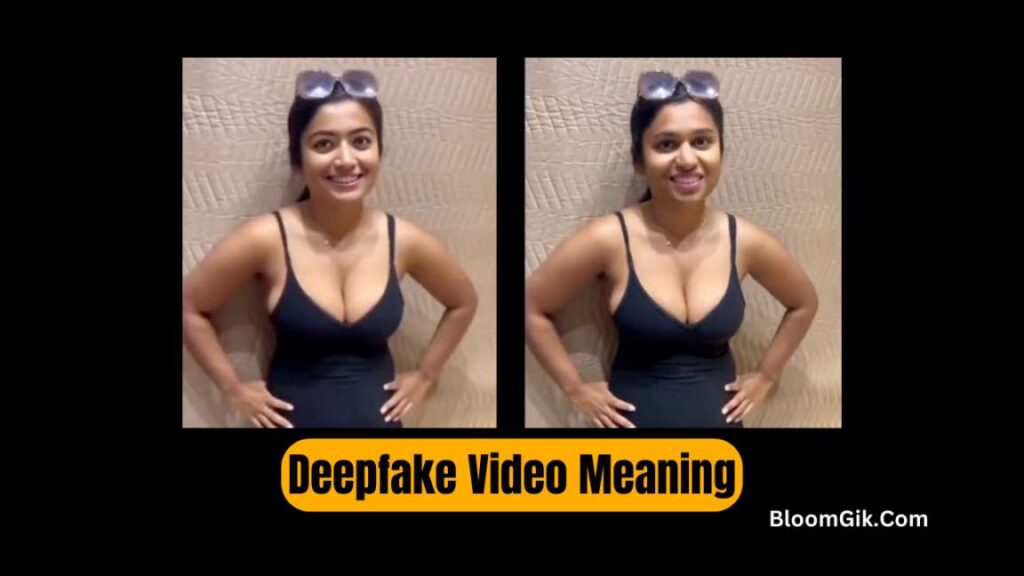Deepfake Video Meaning

Table of Contents
What is Deepfake Video | Deepfake Video Meaning
A deepfake video is a synthetic media in which a person in an existing image or video is replaced with someone else’s likeness. While the act of faking media is not new, deepfakes leverage powerful techniques from machine learning and artificial intelligence to manipulate or generate visual and audio content with a high potential to deceive.
Deepfakes are created using a variety of deep learning algorithms, including autoencoders and generative adversarial networks (GANs). Autoencoders are trained on a large dataset of images or videos of a particular person, learning to encode and reconstruct the person’s facial features. GANs are two competing neural networks that are trained against each other, with one network generating synthetic images or videos and the other network trying to distinguish between real and fake content.
Once a deepfake algorithm has been trained, it can be used to create synthetic videos of a person saying or doing things that they never actually said or did. Deepfakes can be used to create fake news videos, celebrity pornography, or even videos of people committing crimes.
Deepfake technology has the potential to be used for both good and bad purposes. On the one hand, it can be used to create realistic special effects for movies and video games. It can also be used to create educational content or to train people in new skills. On the other hand, deepfakes can be used to spread misinformation, damage people’s reputations, or even blackmail them.
Deepfake Video Meaning in Hindi
Deepfake video एक सिंथेटिक मीडिया है जिसमें एक मौजूदा छवि या वीडियो में किसी व्यक्ति को किसी और के चेहरे से बदल दिया जाता है। जबकि मीडिया को नकली बनाने का कार्य नया नहीं है, deepfakes मशीन लर्निंग और आर्टिफिशियल इंटेलिजेंस से शक्तिशाली तकनीकों का लाभ उठाते हैं ताकि दृश्य और ऑडियो सामग्री को उच्च धोखा देने की क्षमता के साथ छेड़छाड़ या उत्पन्न कर सकें।
How to Spot Deepfake Videos
While deepfake videos can be very convincing, there are a few things you can look for to spot them:
- Unnatural facial expressions or movements. Deepfake videos can sometimes have difficulty replicating natural facial expressions and movements. Pay attention to the person’s eyes, mouth, and head movements to see if they look natural.
- Blurred or distorted features. Deepfake videos can sometimes have blurred or distorted features, especially around the edges of the face. This is because deepfake algorithms can have difficulty blending the synthetic face with the real background.
- Inconsistent lighting or shadows. Deepfake videos can also have inconsistent lighting or shadows. This is because the synthetic face may be lit differently than the real background.
- Audio that doesn’t match the video. Deepfake videos can also have audio that doesn’t match the video. This is because the synthetic face may be generated using a different voice than the real person’s voice.
If you see a video that seems suspicious, you can try to reverse search the video to see if it has been posted elsewhere. You can also try to find out more about the person or organization that posted the video. If you are still unsure, you can always contact the person or organization directly to verify the video.
Preventing the Spread of Deepfake Videos
There are a number of things that can be done to prevent the spread of deepfake videos, including:
- Educating the public about deepfake technology. It is important for people to be aware of the existence of deepfake technology and how to spot deepfake videos.
- Developing tools to detect deepfake videos. Researchers are developing new tools to detect deepfake videos, but these tools are still in their early stages of development.
- Updating laws and regulations. Laws and regulations may need to be updated to address the potential harms of deepfake technology.
Deepfake technology is a powerful tool that can be used for both good and bad purposes. It is important to be aware of the potential harms of deepfake technology and to take steps to prevent the spread of deepfake videos.








